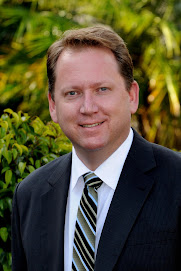
Call Centre and Customer Service Processes can be very complex. Ask yourself the following questions...
- Ever deal with a customer service person and have to give them the same information over and over again?
- Have you had trouble getting through to the "right" person in a call centre?
- Ever not want to call a centre/ customer service person but we forced to do so because you couldn't easily find another more self service way of doing what you needed?
- Been frustrated because you've had to call a customer service/ call centre line only to get a different representative every time and each time to have to educate them on the history of your case?
- Been passed around from one call centre person to another and after talking to 2 or 3 people still you haven't gotten what you've wanted?
... these are all symptoms of poor customer services/ call centre business process design that we've all had to deal with. The fact that these type of call centre and customer service organizations have been in existence for years and yet most people wince when you suggest having to call one indicates that we are still a long way away from perfecting the "science" in this area.
In dealing with development of call centre and customer service business processes there is no secret road map or easy path to success. But there are a few common sense concepts that you can apply when designing your process and some process goals you can work towards achieving which if you do achieve them you will certainly reduce costs and improve the overall perception of service.
At a high level the following are the key components of any best practice customer service and call centre processes and a model you can use for process design…
Profile
Understand the person you are interacting with. Obtain and be able to present more information to the call centre/ customer service agent about the person they are talking with. Make sure that you business processes and systems trap that information as you interact with the person that you become a learning organization. Collect information to map their buying behaviours and interests.
Segment
Automatically differentiate the process depending on the person calling and understand what they want. Develop this segmentation as part of your profiling process. Understand the persons worth to you and client/ candidate preference and differentiate service levels accordingly. Not all customers perceive a higher level of interaction as being a higher service level.
Push those customers who are lower value to you and/or prefer less interaction to your self service channels (IVR, web). Reallocate those resources to provide higher levels of services to those who need/ want it. Develop processes to proactively call those people who need/ warrant the higher levels of service.
Interact
Manage and plan the interaction types based on the process, profile and segmentation. Automate the processes as much as possible and minimize search time and data entry time. Eliminate double entry and double ask where possible. Allow the person to easily self select the business process/ procedure that they need. Match you agents questions, inputs with the persons stage in the buying cycle. The goal here is to minimize the time to resolution in a call and make the process seem seamless to the person.
Personalize
Make every interaction, every session and every campaign feel personal. Lack of personalized service is often the reason sighted for avoiding the use of call centres. By having/ maintaining good quality profiles of your customers and presenting the information in the right way to your customer service/ call centre people it will allow them to personalize the interaction with the customer and provide a higher perceived level of service.
Clearly there is a lot business process design and implementation effort required to achieve the above. Supporting Technologies and and emphasis on effective Change Management are also important considerations. But the above methodology can provide you a guide as you lay out your plans for process improvement over the next few years.
David
Goad is the Managing Director for eSavvy – Microsoft Dynamics
CRM Gold Certified Partner. eSavvy is an award
winning Microsoft
Dynamics CRM Partner staffed by some of the most experienced solution and
technical architects in the Microsoft partner channel. We build and deliver
relationship management solutions based on the Microsoft
Dynamics CRM platform for large enterprises as well small and midsize
businesses in Australia.



